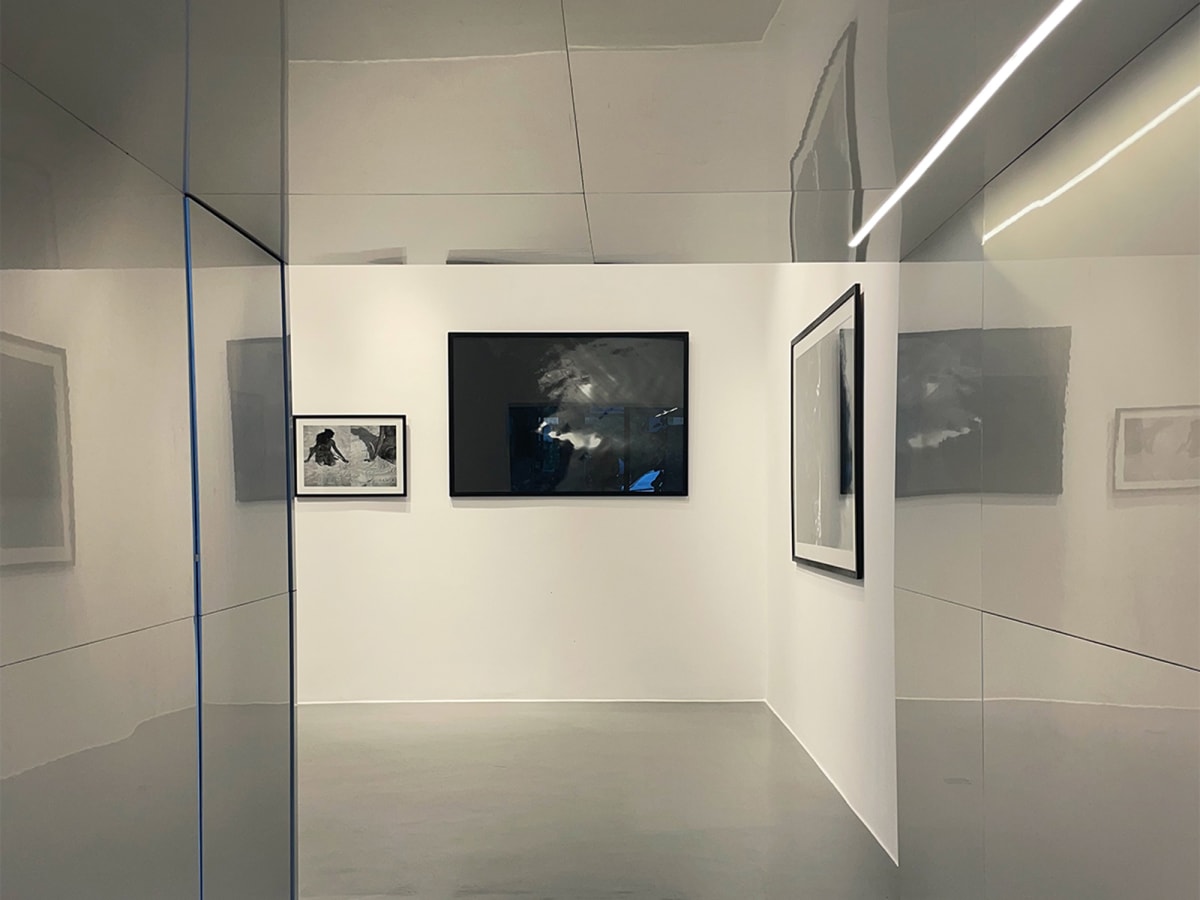CHADA
Born in 1998 in Ivory Coast, Charles-David Gnangoran, a.k.a. Chada, is an Ivorian artist whose practice explores ceramics, sculpture, textiles, and installation. After studying law, he pursued artistic training at the National Superior Institute of Art and Cultural Action Institute in Abidjan, before refining his approach at the Beaux-Arts de Marseille.
Graduating with honours and winning the first prize of the prestigious Alberto Cortina Prize for African Art, Chada’swork speaks about the tensions between tradition and modernity, while questioning African cultural heritage and Western influences.
His work draws on a dense materiality rooted in a poetics of found materials, such as roots, shells, and vines, collected during his travels between Africa and Europe. These materials are reimagined and reassembled to interrogate both collective and individual memory.
In the darkness of silence, a canvas unfolds, weaved with ethereal threads storytellers of forgotten stories and ancestral memories. Like an alchemist of emotions, Chada dives into the depths of his being, exploring the complexities of his identity through the lens of textiles. He challenges boundaries, seeking to transcend the limits imposed by colonialism and to reveal the essence of African culture.
His practice extends beyond aesthetics, serving as an invitation to reconsider the relationships between humanity, objects, and history. His tapestries offer a critical perspective on cultural domination and memory-related tensions while exploring the narrative potential of ambiguity.
The artist develops installations that form plural narratives, where material and artisanal techniques intersect in a fertile dialogue. Collaborating with artisans, to learn craftsmanship, he reinterprets and learns traditional skills. His work operates as a hybridisation, weaving connections between temporalities, geographic spaces, and forgotten histories.
By blending traditional artisanal techniques with contemporary expressions, his work combines tapestries, ceramics, cocoa jute bags and natural materials to create pieces rooted in his personal journey and reflections on collective history. Each piece becomes a tangible archive, a testimony to the intersection of his African roots and Marseille influences.
Chada’s handwoven tapestries reflect his dedication to craftsmanship, an appreciation of time in a world where time seems fleeting, perceived as both a meditative practice and a stance against the growing uniformity of society. The human figures in his work often blend with animal forms and varied motifs, creating a harmony of shapes and tones that evolves throughout his creative process. The final result reveals works imbued with sensitivity, rich in stories and symbols.
Through weaving and shaping, Chada invites us to slow down, to feel, and to listen to the narratives embedded in the material. His works are not merely objects but spaces for dialogue, mirrors reflecting both individual stories and collective dynamics.
Chada’s work has been featured in April 2025 in 100% l’Expo, the yearly exhibition held in la Grande Halle de la Villette in Paris, showing the work of freshly graduated students from French Fine Arts Schools. Also in 2025, he was commissioned for an in-situ installation by Château de Montgoger, which was presented during the NOIR MATTERS exhibition as part of the AR(t)CHIPEL festival organised by Centre Pompidou and the Region Centre-Val de Loire. Ultimately, Chada's work is part of the prestigious collection of the KADIST Foundation.
-

Diptyk
Qui est Chada, l'artiste ivoirien que les collectionneurs s'arrachent ?Olivier Rachet, Diptyk, April 3, 2025 -

Afrique Magazine
Chada, le plasticien qui explore les artisanats africainsAstrid Krivian, Cédric Bouvier , Afrique Magazine, March 6, 2025 -

GQ Middle East
A Curator's Guide to Marrakech’s 1-54 Contemporary African Art FairHiba Ali, GQ Magazine, January 28, 2025







